Best indoor cycling shoes 2025: Fast and cool shoes for indoor cycling
The best indoor cycling shoes need to be adjustable, feature lots of ventilation and deliver plemty of pedal power, here's our favorites options
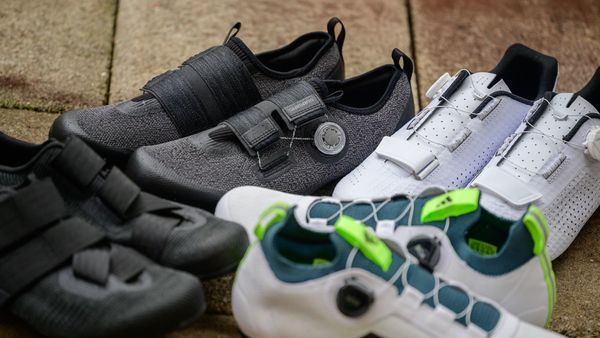
The best indoor cycling shoes make it comfortable and easy to ride your bike indoors. What does that mean though? Indoor cycling is one of the fastest growing segments of the sport but it’s not the same thing for everyone.
For many of our readers, indoor cycling is almost the same as outdoor riding, acting as an efficiant method to maximise training or join friends virtually for a social ride. Take a look at the best smart trainers and smart bikes and you can get yourself outfitted with a system that does a very convincing job of replicating outdoor rides. You can explore virtual landscapes or compete against other people in races of all kinds.
Alternatively, indoor cycling for some people means spin cycling. Our pick of the best exercise bikes has options for spin classes in your own home or you might be looking to add a pair of the best indoor cycling shoes to your gym bag. Whatever landed you here, we've got options.
Indoor cycling shoes should be easy to get into and ready for high heat. Some people will look for choices that make walking a bit easier. Others will need a solution for the best power transfer in a tough race on an indoor cycling app and many will want an option that works for both indoor cycling and riding outside.
Keep reading to see a selection of my favourite indoor cycling shoes to cover all these needs or head lower down for my buyer's guide if you want more advice to help you choose.
Quick list
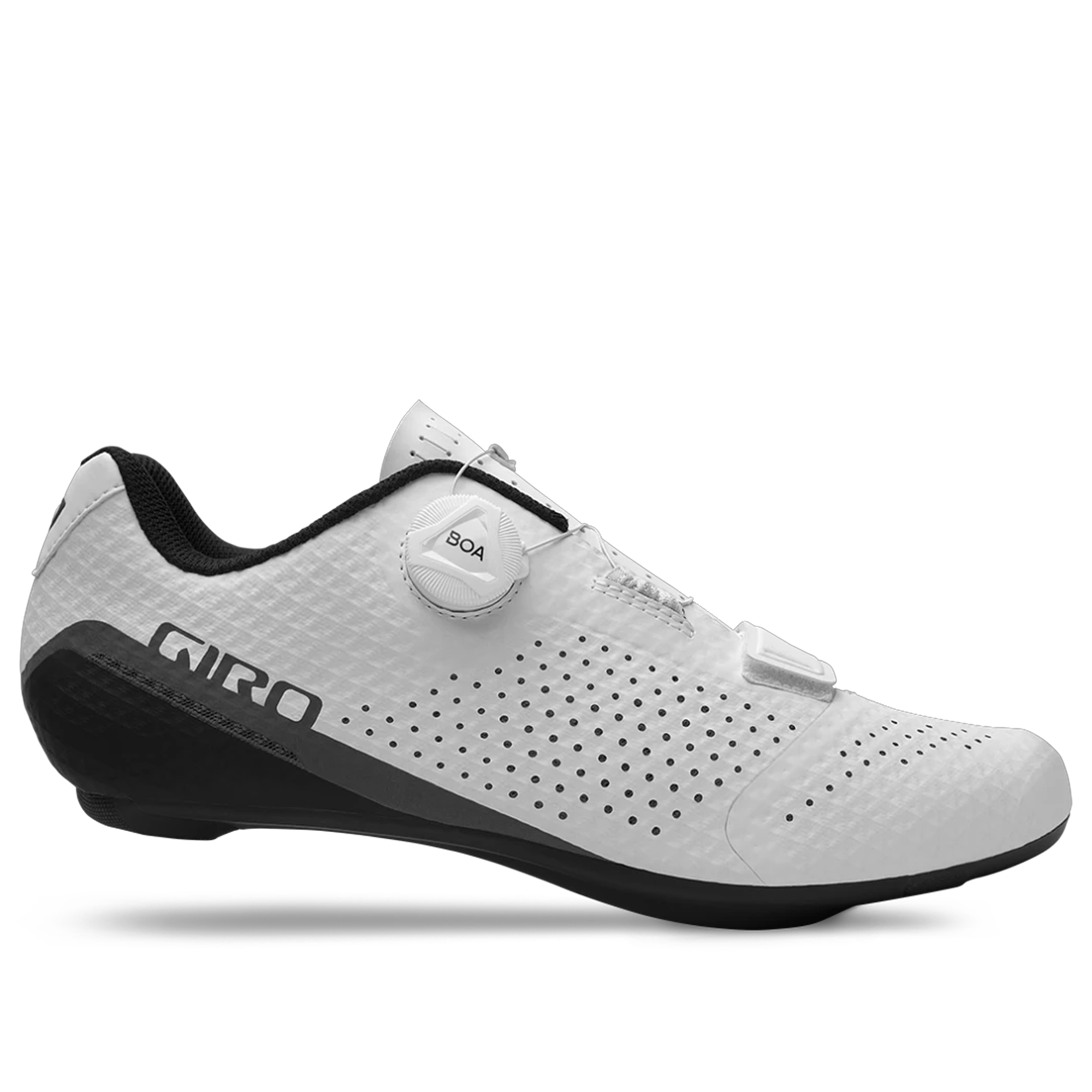
Features a stiff enough sole for whatever you want to do, BOA dials, the ability to mount both types of cleats, and useability both indoors and outdoors pretty much covers every need you can think of all at a reasonable price.
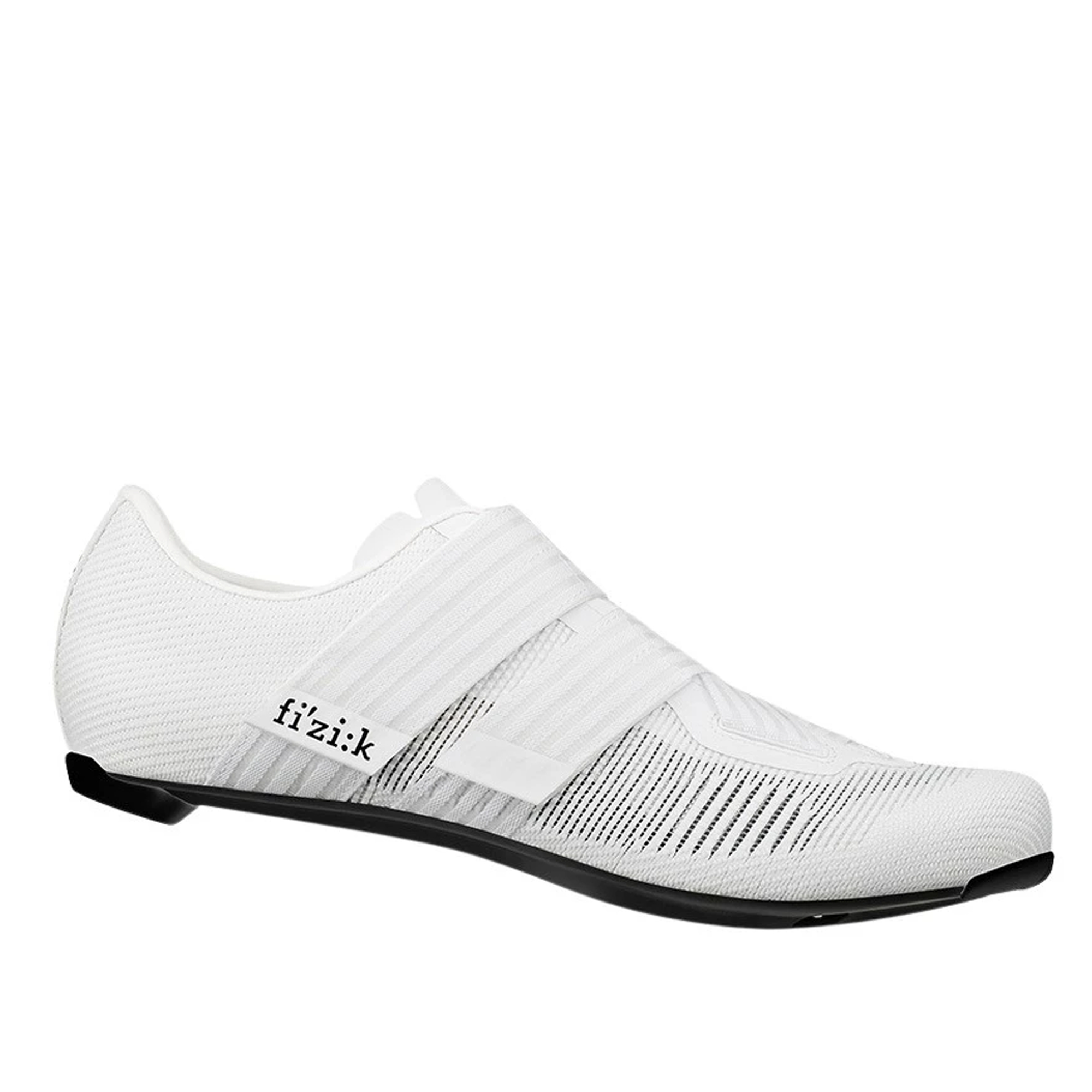
The Fizik Vento Powerstrap R2 Aeroweave is a top-shelf outdoor cycling shoe appropriate for the hardest sprints you can throw at it. It’s also so airy that it feels like nothing and the big straps make it fast to get in and out of.
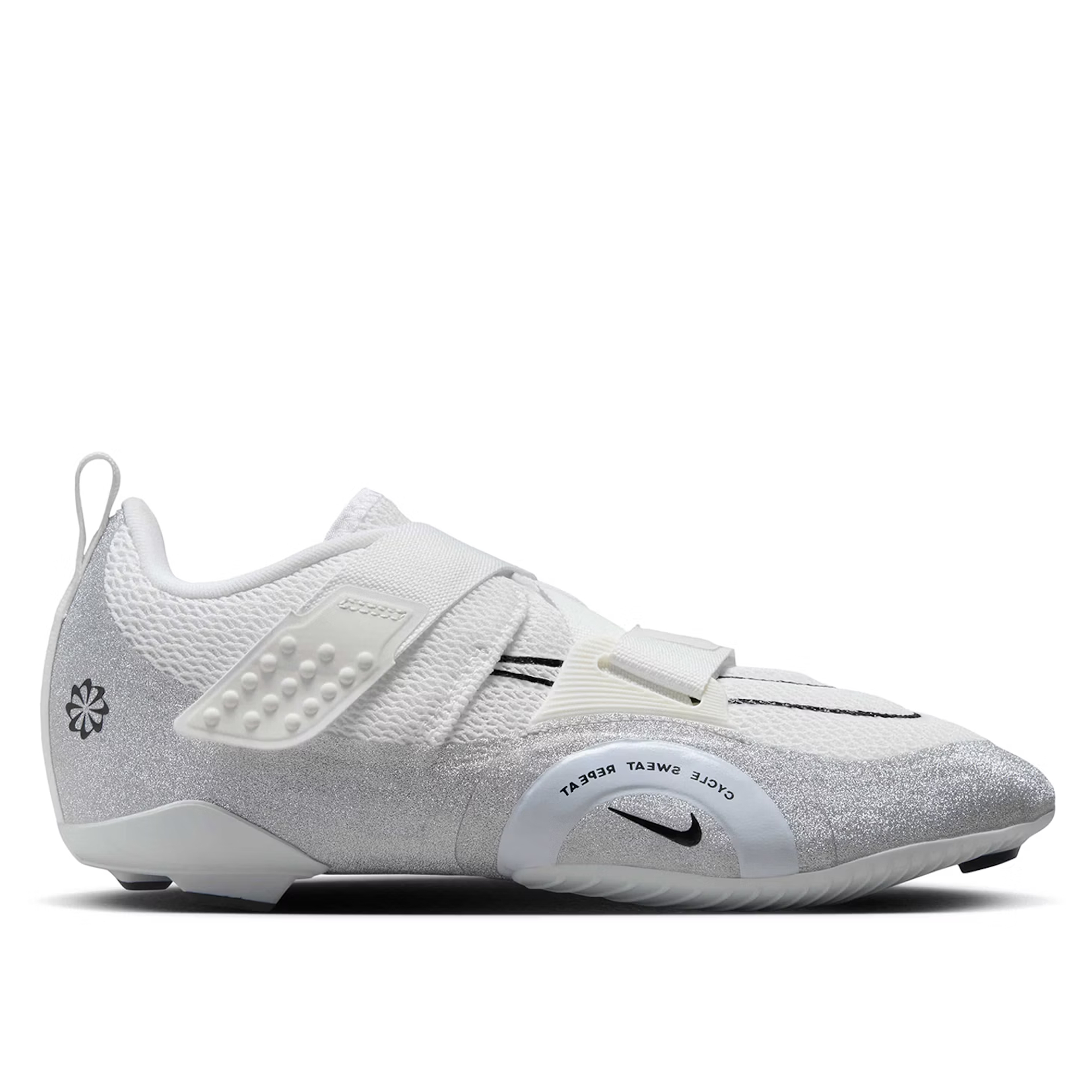
The combination of a three-hole cleat interface, a walkable sole, and tons of ventilation make the Nike entry perfect for your next spin class at the gym.
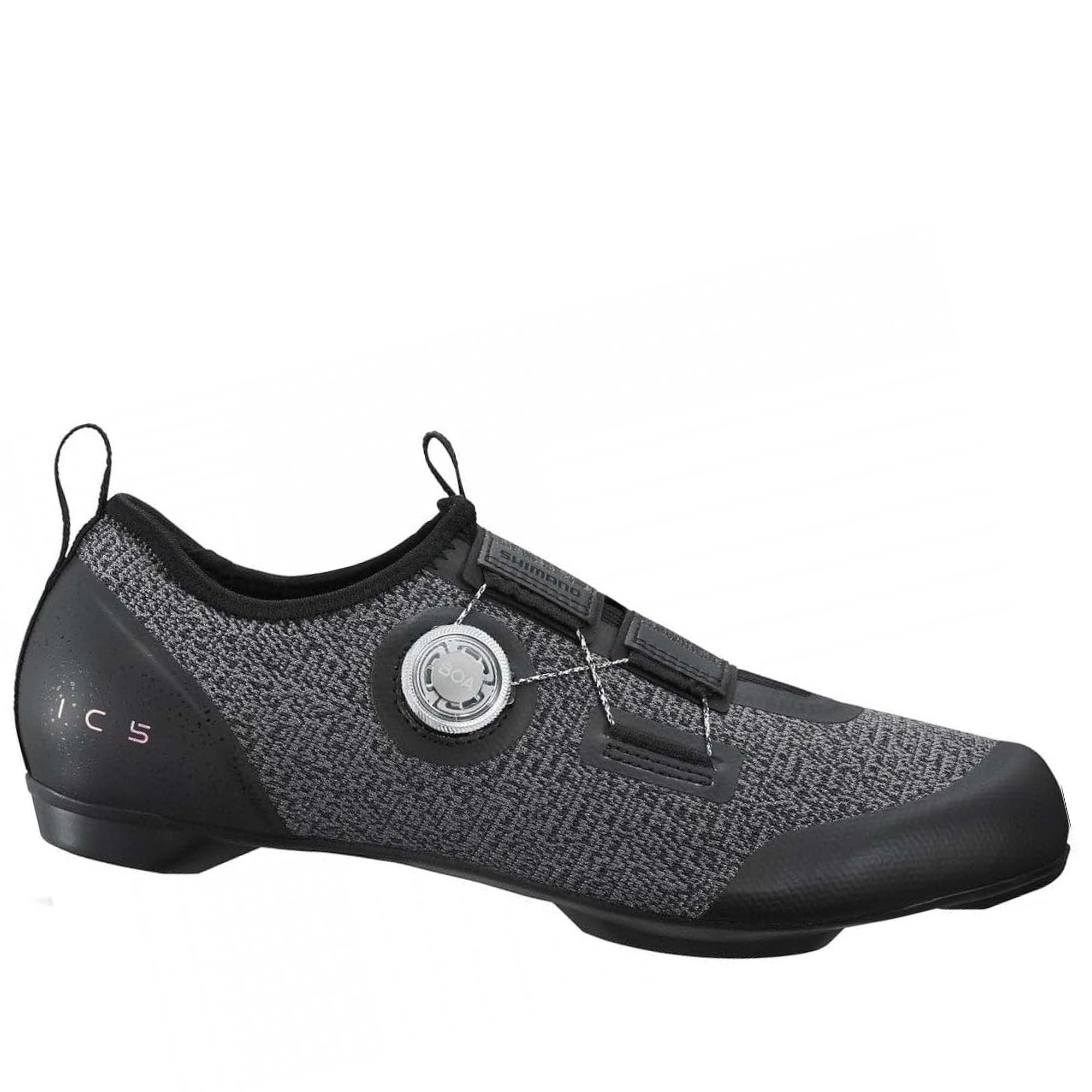
The Shimano SH-IC501 is so comfortable and walkable it’s barely distinguishable between a regular shoe and an indoor cycling shoe.
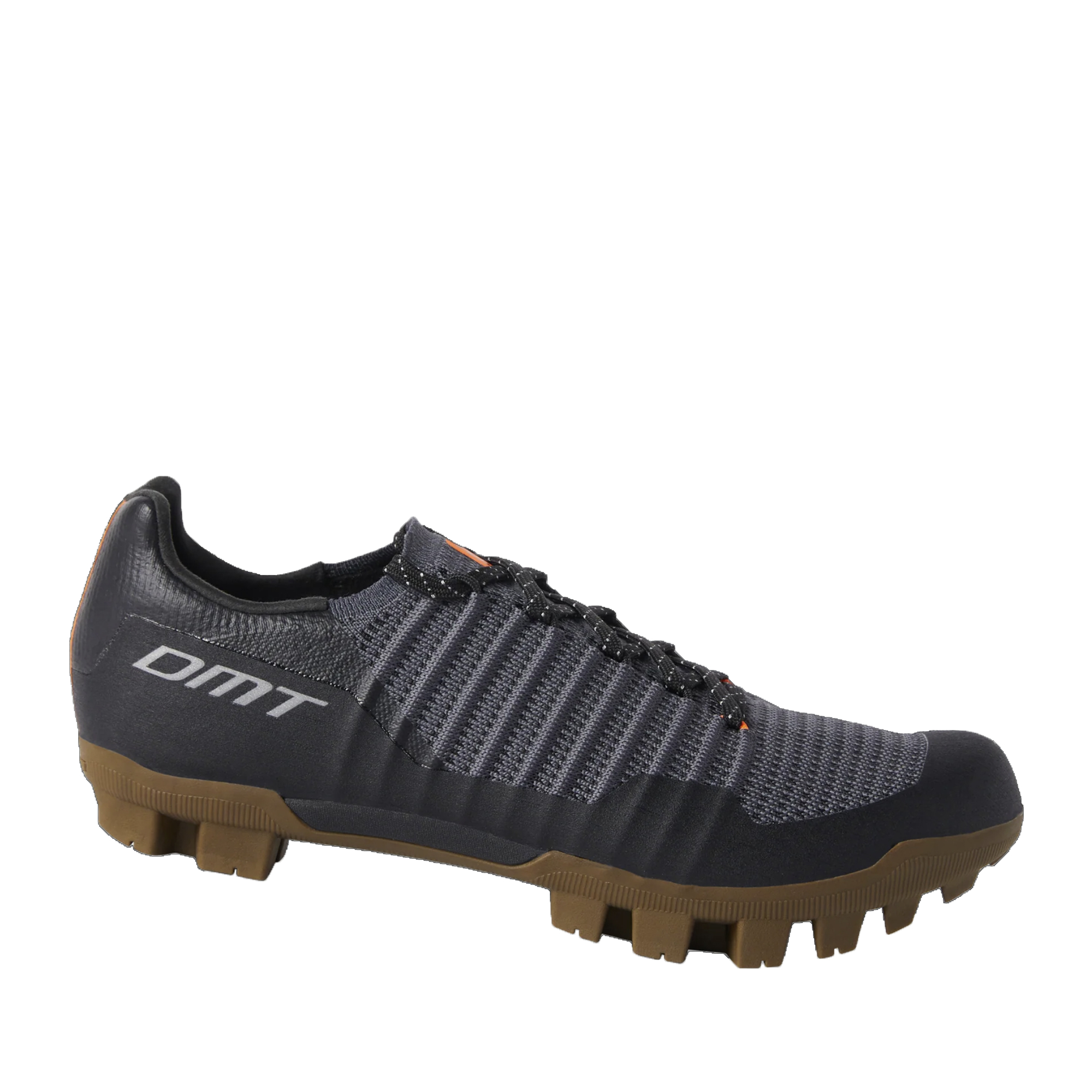
If your indoor cycling trends towards simulating outdoor rides then a gravel shoe is a great choice for comfort and walkability indoors. While there are a ton of good options, the DMT GK1 strikes the right balance of reasonable cost, accessible stiffness, comfort, and ability to deal with indoor heat.
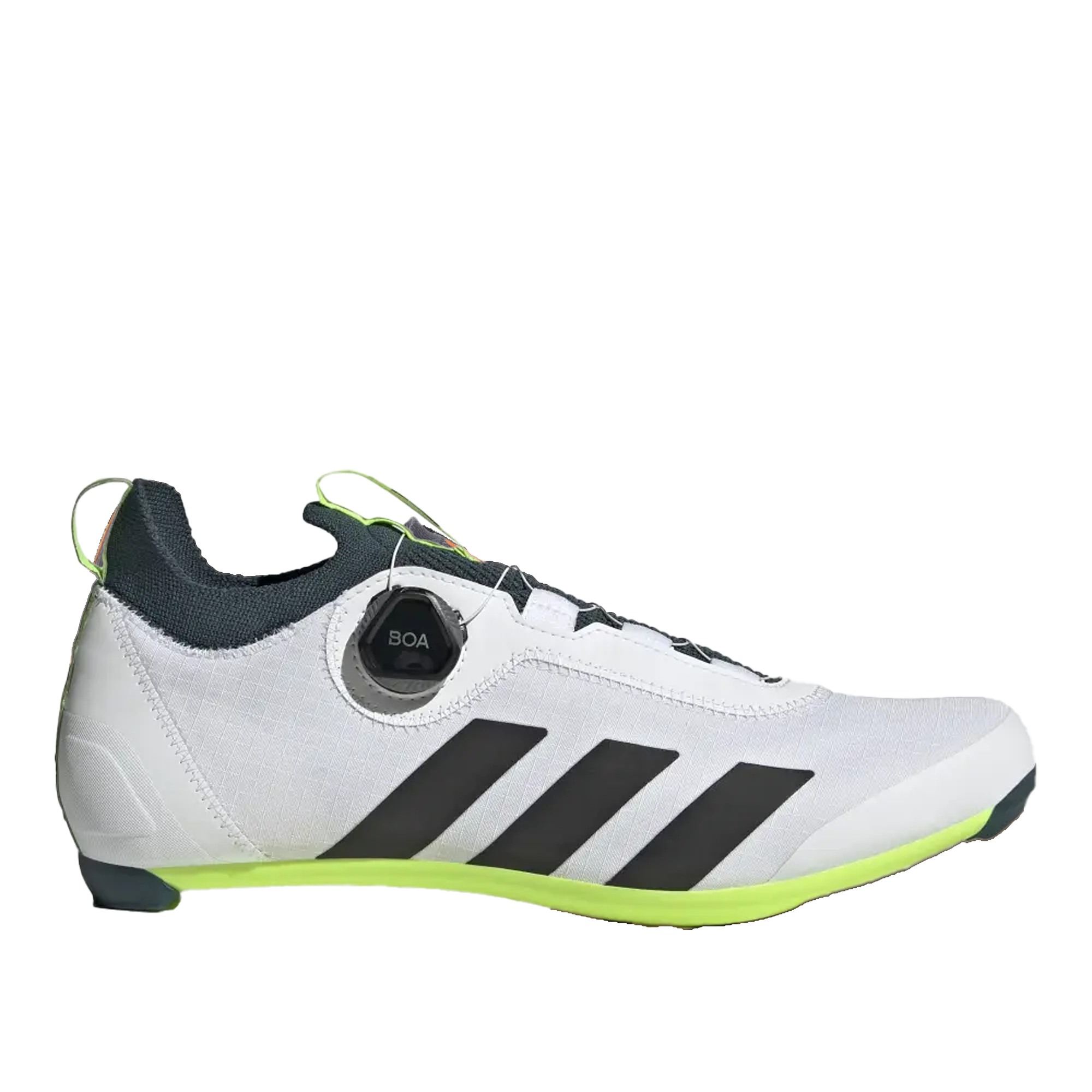
Adidas offers an indoor shoe and it’s not this one. Instead, this outdoor shoe gets you the exact same base and trades Velcro for a BOA dial on the upper but it’s also often priced with a hefty discount.
Last updated on 22nd of April 2025
Checked products are still relevant, specifications are current and products are still available. Product images have been refreshed and the overall formating of the guide has been refined to improve readability.
Best indoor cycling shoes
Best overall indoor cycling shoe
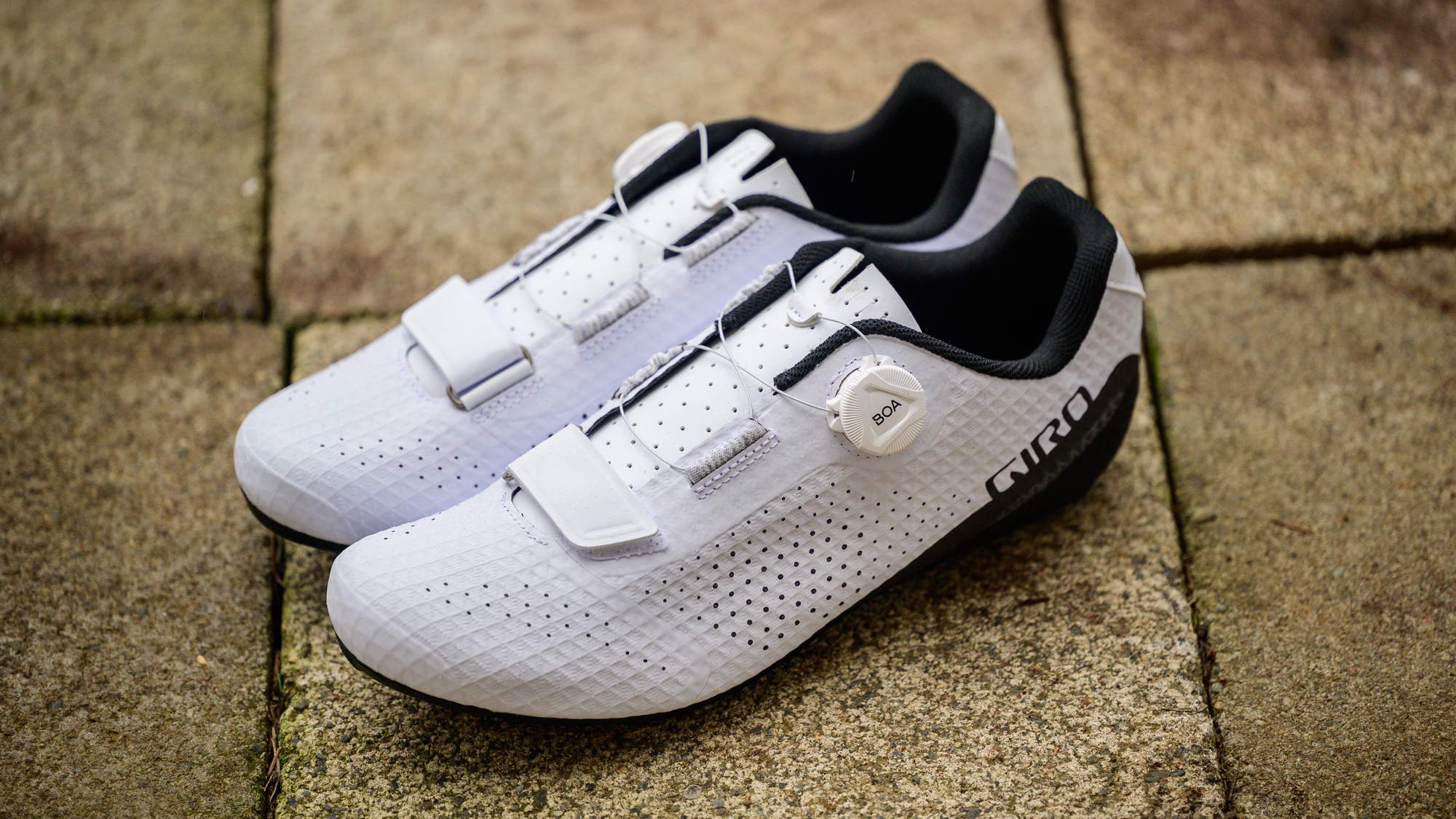
1. Giro Cadet
Specifications
Reasons to buy
Reasons to avoid
The Giro Cadet shoe straddles the line between indoor-specific and outdoor useability. Although Giro markets the shoe as being for outdoor riding, it's unusual for an outdoor shoe to support both a 2-bolt and 3-bolt cleat. That feature adds weight and if you own your bike you get to pick what kind of pedals you use. That's not always true with indoor cycling though.
The lack of built-up lugs on the sole means that in most cases, you will want to use a 3-bolt cleat. In this case, it will be the more walkable solution. The advantage here is that should your needs change, you aren't stuck needing new shoes.
As nice as that flexibility is though, that's not the only reason the Giro Cadet finds a place on this list of the best indoor cycling shoes. Instead, it's really about how middle-of-the-road these shoes are. The carbon-reinforced nylon sole makes these a more affordable choice but aren't so flexible you'll find yourself annoyed when the intensity shoots up. You've also got a highly vented upper with plenty of structure to keep your foot in place and BOA dials that pop to release your foot at the end of an intense workout. Unfortunately, those BOA dials do lack dual direction micro-adjustments likely as a way to further keep control costs.
Best indoor cycling shoes for e-racing
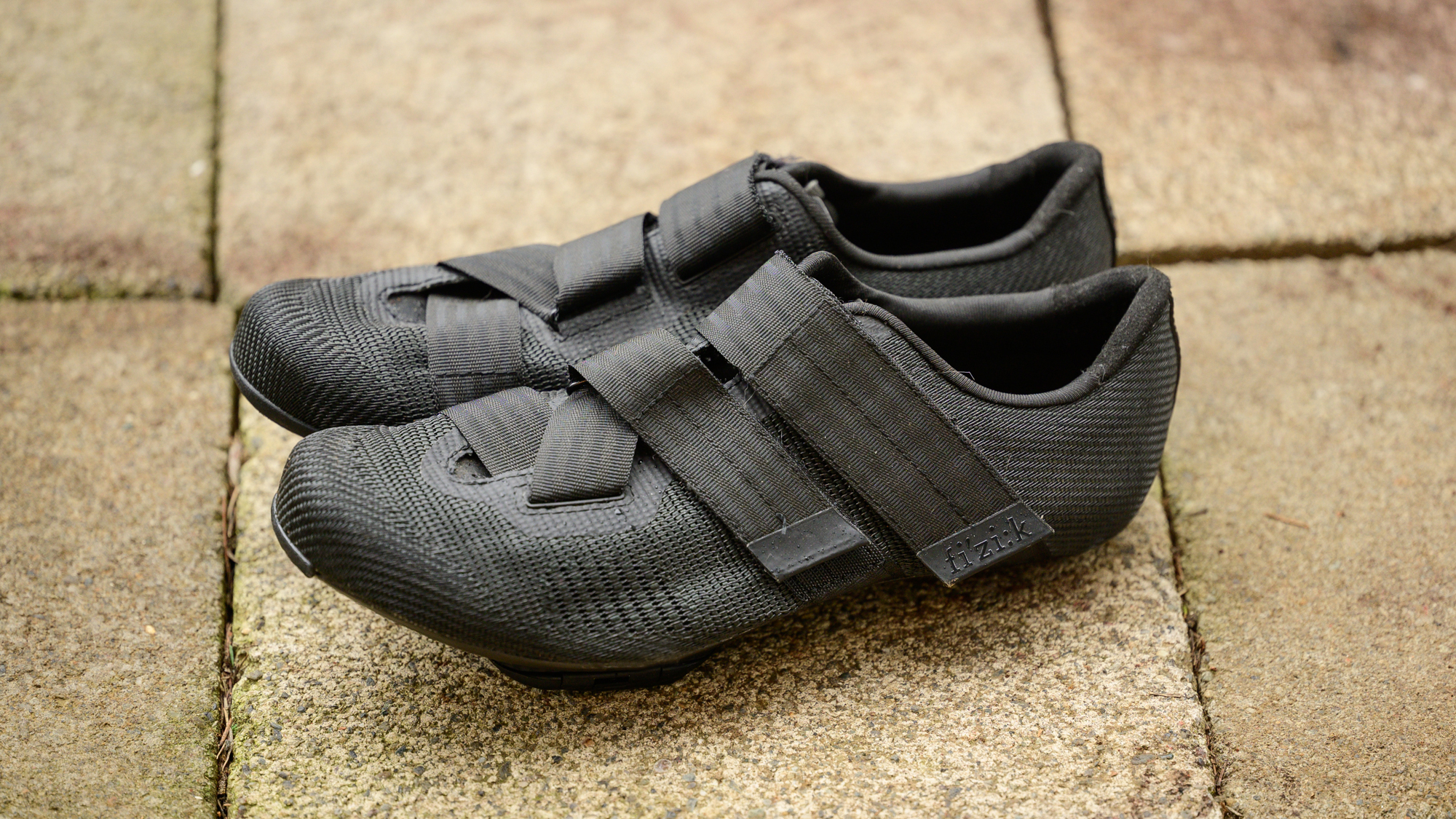
Specifications
Reasons to buy
Reasons to avoid
The Fizik Vento Powerstrap R2 Aeroweave is another outdoor shoe but this time it's a top-of-the-line option. What makes it a good choice indoors is that it's also the shoe Fizik positions for the hottest summer days. Although almost all modern cycling shoes use different types of synthetic uppers, Aeroweave takes that a step further. The material doesn't resemble leather or fabric of any kind and is instead obviously thin plastic threads woven together. The weave is wide open allowing tons of airflow while also easily conforming to the shape of your foot without any stretch. It works well on hot summer rides but it's also great indoors.
The way Fizik handles the closure is another unique feature. Instead of the gold standard BOA dial, the brand has a system called Powerstrap. It might seem like a pair of big wide straps that aren't all that high-tech but in reality, it's very fast to adjust, or get in and out of, plus it's lightweight. The wide straps are also great at locking your foot down with no pressure point.
The real jewel of these shoes though is the carbon sole. In my experience, there's no other situation where I want a stiffer base than when I'm racing on Zwift. Outside I generally ride longer distances and want a bit of forgiveness but indoors the longest races are around an hour. I want a stiff and responsive base to handle high watts in short bursts and the Fizik Vento Powerstrap R2 Aeroweave delivers. Just keep in mind that if you do decide to spend longer in these shoes, Fizik's are narrow and you may need something wider for long outdoor rides.
Read more details in my full Fizik Vento Powerstrap R2 Aeroweave road shoes review.
Best money no object choice for e-racing
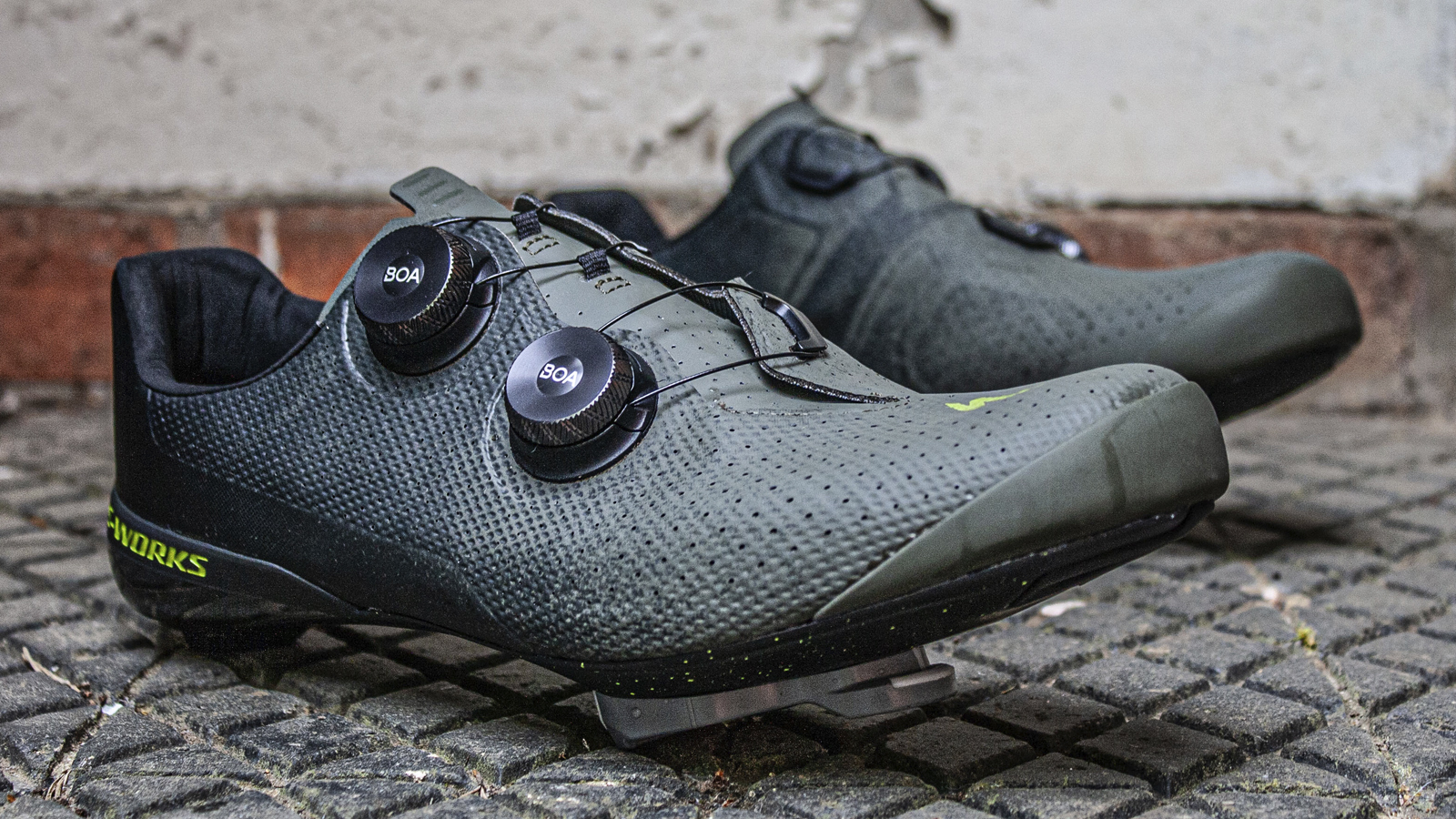
Specifications
Reasons to buy
Reasons to avoid
For e-racers looking for the best power transfer, a comfortable fit and great ventilation, apart from the shoe's price it's hard to look past the S-Works Torch.
The sole is the stiffest Specialized offers, so there's great power transfer and the two metal BOA dials make adjustment easy. But beyond that, Specialized's Body Geometry technology, two width options and half sizes make for a comfortable fit, while the well-perforated upper and tongue give you the ventilation you need for hard indoor efforts.
Body Geometry improves the shoe's biomechanical efficiency and reduces pressure points, both important for e-racers and you can spec custom footbeds for even greater comfort, if needed.
Being a pro-level shoe, there's nothing to stop you from riding outdoors with the Specialized S-Works Torch either, as you'll read in our review.
Best indoor cycling shoes for spin class and Peloton users

Specifications
Reasons to buy
Reasons to avoid
The SuperRep Cycle 2 is a second-generation product from Nike that specifically targets spin classes and Peloton users. While the base only accepts three-bolt cleats, a triple heel stop system pulls styling cues from the brand's football, or soccer depending on where you live, offerings. It's still highly walkable and you won't have to worry about damaging floors.
The real focus of the shoes though is ventilation rather than sole stiffness. The walkable base might not be your best bet for e-racing but the upper will keep you comfortable. With that in mind, Nike uses a highly vented sock-like upper with venting through the base plate as well. The naturally breathable mesh fabric means heat can escape, and airflow will keep you feeling comfortable even during longer classes.
As with any product that focuses on a specific area, these will leave some wanting for more. The SuperRep 2 uses a heat-moulded nylon plastic half-sole around the forefoot area to take care of power transfer. Torsional stiffness - as expected - is somewhat lacking, and the heel area flexes from side to side when manipulated by hand. If you demand a stiff base, look elsewhere. For recreational indoor cyclists who want something comfortable and airy that will make the indoor cycling experience a bit more bearable, then Nike's SuperRep 2 Cycle shoes are a promising option.
You can read more details in the full Nike SuperRep Cycle indoor cycling shoes review.
Best indoor cycling shoes for walking
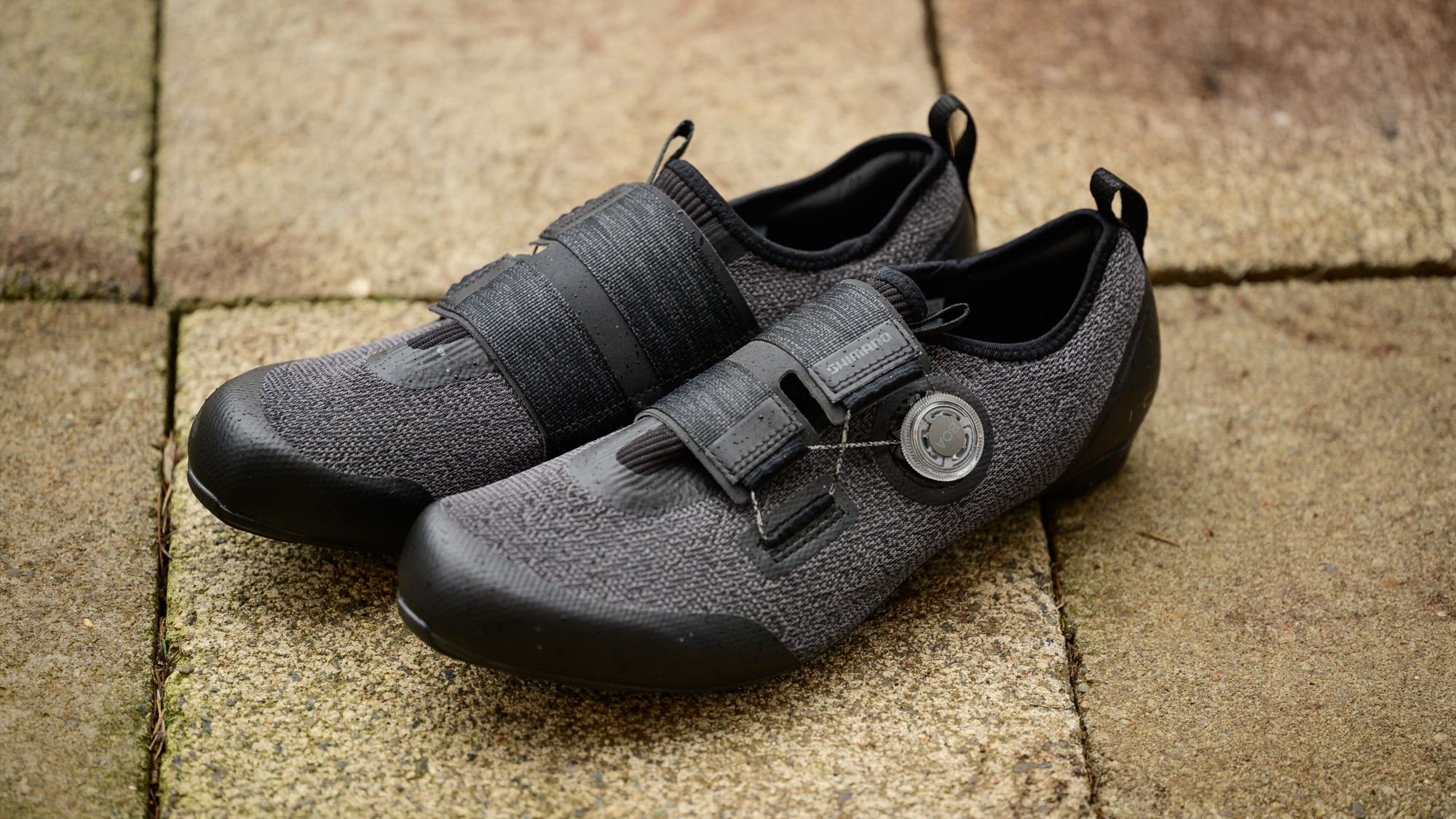
5. Shimano SH-IC501
Specifications
Reasons to buy
Reasons to avoid
There's a bit of yin and yang happening between the Nike shoes and the Shimano SH-IC501 Indoor Cycling Shoe. They both have a similar focus and a lot of similarities but they end up being different sides of the same coin. Bottom line, if you are a casual indoor cyclist who is looking for a comfortable shoe either would be a good choice. That also means both suffer from the same issue of having a very soft base. The biggest difference between the two is that they use different cleats. While Nike went with a 3-bolt cleat mount, Shimano is using a 2-bolt.
The base of the SH-IC501 is almost completely rubberised. The nylon plate is so flexible it will bend enough for a natural gate and there's no way you'll slip with the amount of traction you've got. Using a 2-bolt system also means a recessed cleat so even the cleat isn't able to contribute to a slip.
The other big difference between the Bike and Shimano options is the use of Velcro. While I'm not against that choice in general, if you are throwing your shoes in a gym bag they might catch on your clothes. Shimano uses a poppable L6 BOA dial to tighten the sock-like upper then adds an "eco-friendly, chemical-free treatment" to limit bacterial growth. If you are looking for a casual option that's easy to walk in and easy to toss in your gym bag these are an excellent choice.
Best dual purpose indoor cycling shoes
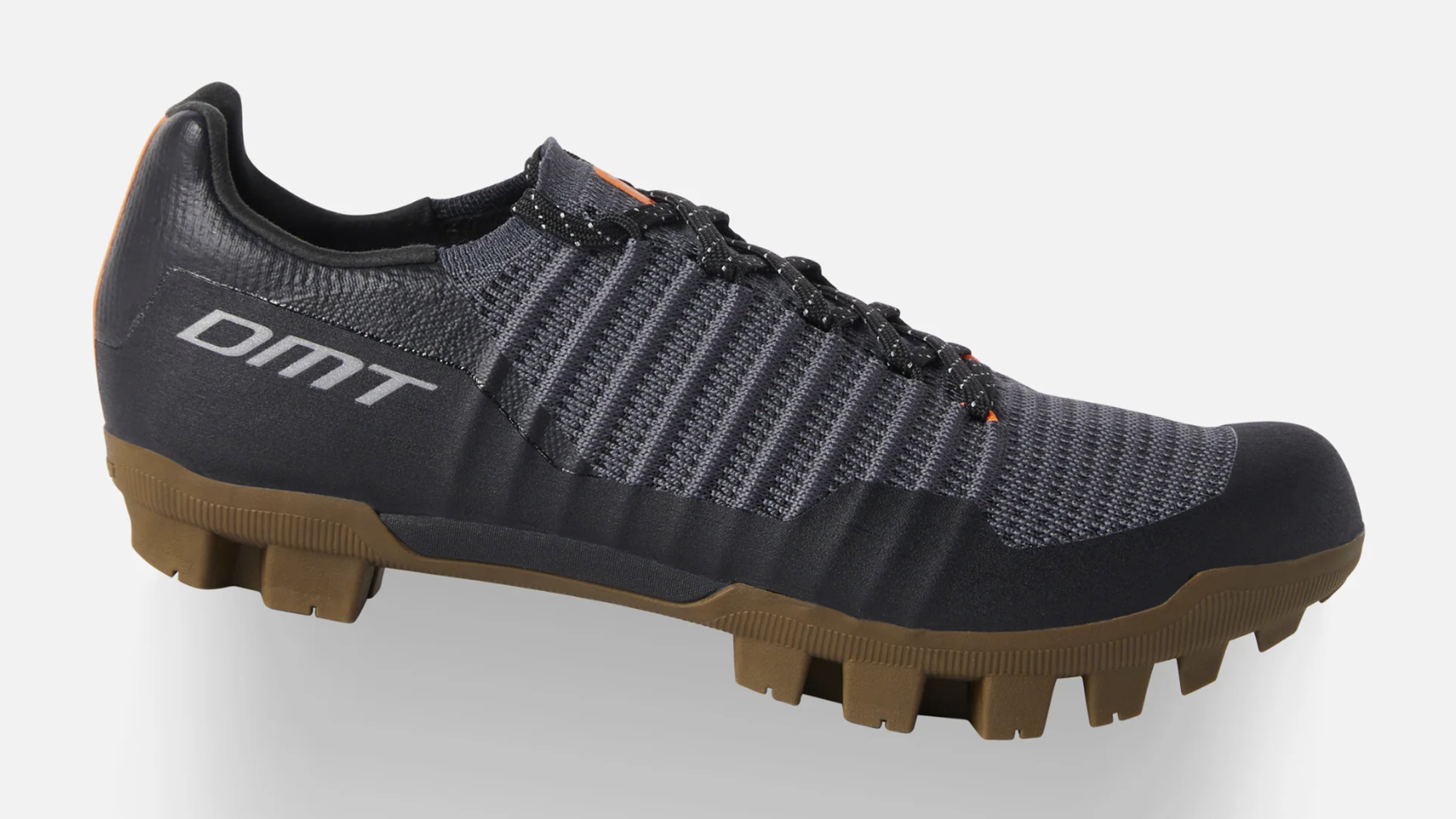
6. DMT GK1
Specifications
Reasons to buy
Reasons to avoid
I lean towards the simulation style of indoor riding. I race or free ride on Zwift and do intervals in TrainerRoad instead of participating in spin classes. In the context of that kind of riding, I'm happy to use outdoor shoes inside but I tend to prefer whatever gravel shoes I'm testing rather than road shoes. The reason is pretty simple, you get a stiff enough plate for racing, or Vo2 Max intervals, but it's easy to walk through my kitchen to my trainer setup. The DMT GK1 makes this list because it's the only option I could find that fits the Goldilocks zone of features.
Although the treads look chunky, they are rather hard and less extreme than you might think. The same is true for the flexible but not too flexible nylon base plate. Combined you end up with a great option for walking around your house before and after an indoor ride but also enough capability to handle a day of off-road riding outside or indoor racing. The base combination isn't as unique as the upper though.
Indoor cycling shoes are best when they are comfortable and do a good job handling high heat. A knit upper does both of those things and that's what Italian brand DMT specialises in. There's no tongue so your foot just slides in then there are laces to dial in the final fit. Unfortunately, that does mean it takes a little more time to get these on than a BOA dial so make sure you leave yourself time before your next Zwift race.
Best budget indoor cycling shoes
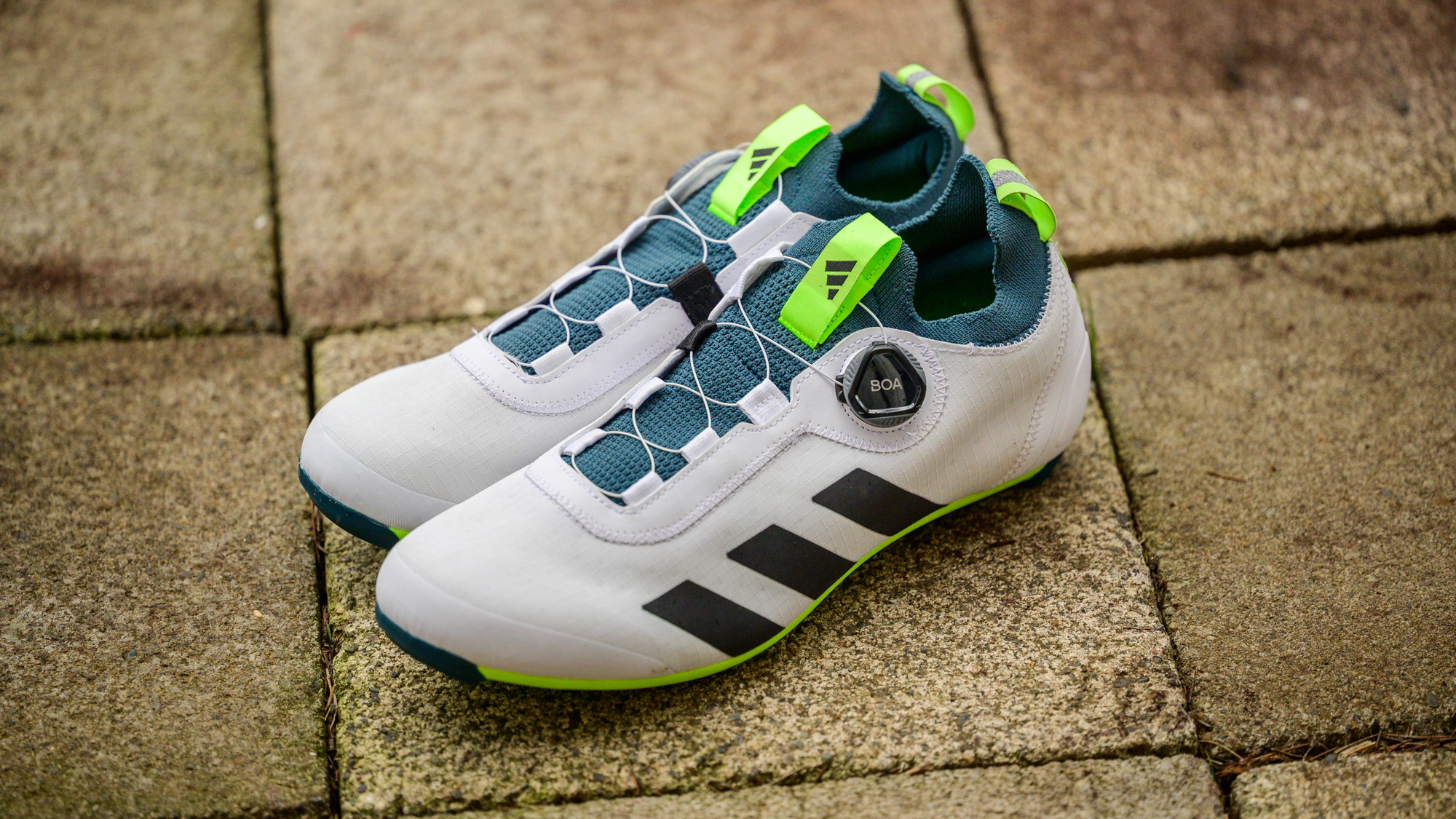
Specifications
Reasons to buy
Reasons to avoid
There are a lot of indoor cycling shoes with relatively reasonable prices. Adidas even has an indoor-specific cycling shoe that carries lower pricing than The Road BOA Cycling shoes. The reason I included these instead is that the most expensive cycling shoe Adidas currently makes has been heavily discounted recently. That's hard to ignore and it comes with the same sole as the indoor shoes plus the ability to use them outdoors.
In fact, given that Adidas uses the same base plate in all the brand's cycling shoes, there's not a drastic difference between any of the models. You can choose laces, a BOA dial, or velcro for the closure but you always get the same fibreglass-reinforced nylon base. It is a fairly soft option that's aimed at casual cyclists so if Zwift racing is your focus you will probably want to look elsewhere.
The upper doesn't differ all that much either. The big defining feature of these is that The Road BOA Cycling shoes feature a BOA dial for closure. It's a single L6 BOA dial at the top and it threads down across the soft sock-like tongue section. It's maybe a little slower than the indoor option and the velcro that one uses but with a loop at the rear to help pull it on, and no laces, you can cut your Zwift start time pretty close. It's also nice to know that the upper is at least 50% recycled plastic pulled from the ocean.
The one thing to keep an eye on is that the upturned toe reduces the overall volume of the fit. If you are close to the line between two sizes, go up.
It's also worth considering the Adidas The Road Cycling Shoes, which we've reviewed. It's a good alternative, just with laces rather than a BOA closure.
Best indoor cycling shoes for high heat
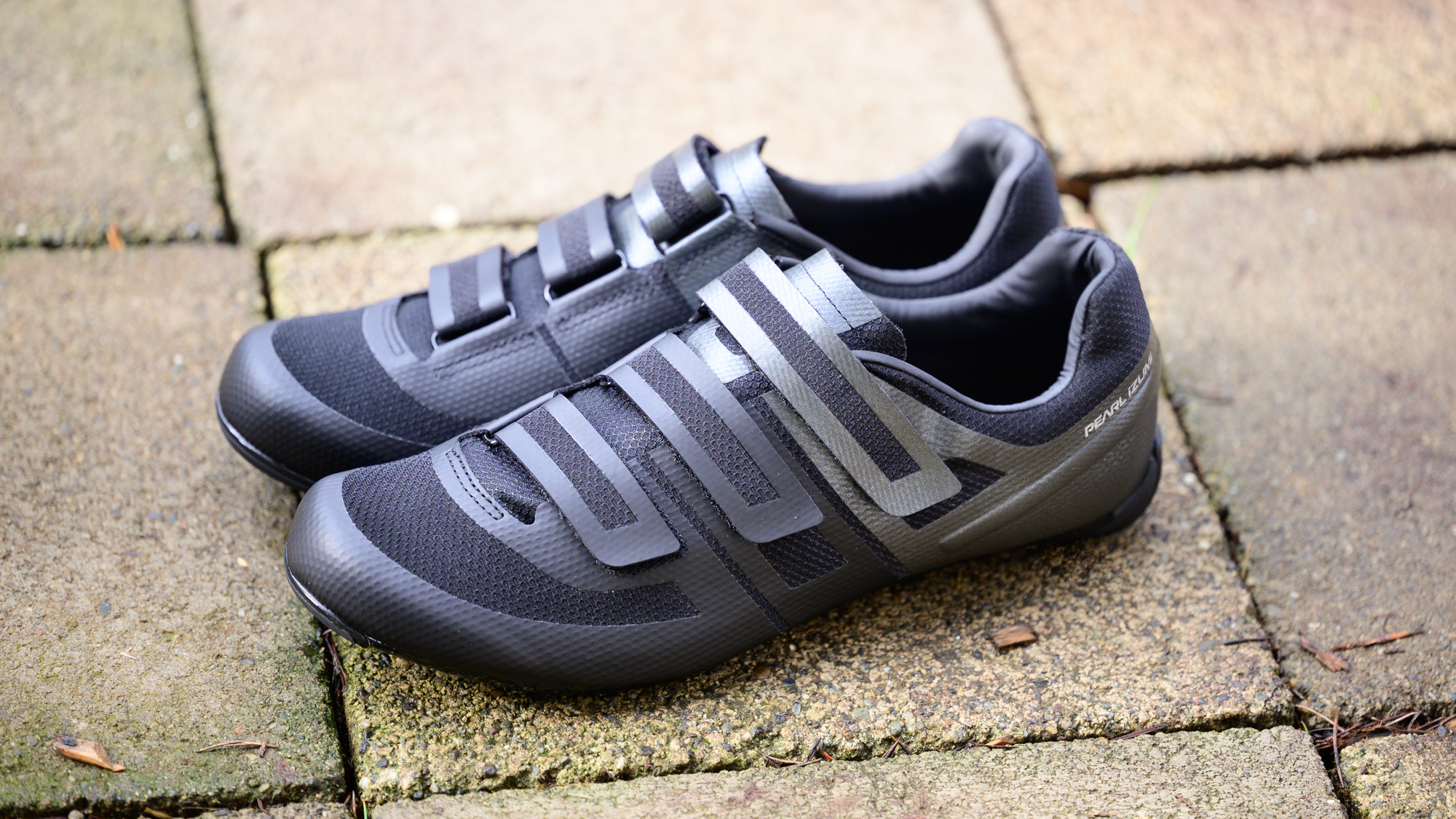
8. Pearl Izumi Quest Road
Specifications
Reasons to buy
Reasons to avoid
There are two different types of Pearl Izumi Quest shoes and they are almost exactly the same. The shoe was originally developed for studio use but it seems to be going through a reinvention with a new label focusing on outdoor use as well. I'd consider these indoor cycling shoes but the redesign is a net positive anyway. There's no price increase but the base has a new design that calls out a "carbon fibre forefoot insert."
That kind of thing is always a little hard to quantify and I don't have direct experience with the older version. What I can tell you is that the new version is stiffer than many of the indoor-specific shoes. Whether that means it makes sense to use outside or not is debatable but it does add useability for indoor intensity. It also continues to retain dual 2-bolt and 3-bolt compatibility so you can decide what works best for you.
On top of that, the old heat management features are still there. Unlike many inexpensive cycling shoe base plates, Pearl Izumi has big mesh-covered vents at both the front and rear of the Quest shoes. Then, up top, there's almost more ventilated area than not.
The one place where the inexpensive nature of these shoes comes through is in the closure system. Three velcro straps are quick enough but it's not a premium look or feel even though it's not terrible to use. Just make sure you keep an eye on what clothes you toss in the bag with these as it's easy to snag things.
How to choose the best indoor cycling shoes
The first thing you will want to think about is what kind of indoor cycling you do. SoulCycling, Peloton, and other spin classes are commonly referred to as indoor cycling but so are apps like Zwift, TrainerRoad, Bkool, Rouvy, and Wahoo X. The two styles are different and they have different needs as well. Some people will head to a gym for indoor cycling and some will do it at home. All of these are a part of the broader indoor cycling ecosystem but they are so different it's almost like different sports.
Despite all that, there are some commonalities between the two types of indoor cycling shoes. The biggest thing is heat. If you ride outdoors, even the hottest days have significantly more airflow. You'll need a fan indoors but that's much more directional airflow compared to outside. So start with thinking about what kind of riding you are planning then think about heat management. There's a range of options above to cover whatever you need.
Which type of cleat do I need?
For the most part, road shoes use clipless pedals with a three-bolt mounting system, and mountain bike shoes use a two-bolt setup. If you're looking to get shoes for a spin class or something like a Peloton bike, all spin bikes have pedals that work with two-hole SPD cleats, while some will also have a Look Delta pedal on the underside.
Your road bike will already have pedals fitted to the cranks, but if you're putting together a dedicated indoor setup, it might be worth looking at a pair of MTB or gravel shoes. With lugs designed for scampering up steep inclines, and over rocks and roots, gravel shoes have considerably more traction than road shoes. That's a feature you are likely going to appreciate if you've ever tried to run to the bathroom mid-workout or had to run to be ready for a Zwift race. Tiles and hard floors require caution when wearing three-bolt road-specific shoes and a 2-bolt off-road shoe is a nice thing to have.
However, if you're not setting up from scratch, you'll simply need to ensure your shoes can accept the cleats that are compatible with your pedals. If you're unsure, go for shoes that accept both styles, like the Nike SuperRep.
Some riders prefer flat pedals. That opens up a lot more shoe options, including trainers, but in general they're likely to be less efficient and your foot comfort may suffer on longer, harder efforts.
Which sole material is best?
It's well established that carbon-soled shoes are stiffer and lighter than their nylon or carbon-reinforced cousins. However, when you're spinning on the trainer, weight is hardly a consideration, but comfort should be.
The vast majority of us can't flex the board-stiff carbon plate usually found on the best cycling shoes. Shoes that are too stiff can cause undue stress on knees and ankles – especially when the bike is essentially bolted to the floor as is the case on most turbo trainers. A small degree of flex vastly improves comfort and helps alleviate overuse injuries without sacrificing much, if any, power transfer or efficiency.
Nylon soles on offer today are plenty rigid enough to make for efficient power transfer, but, with a bit more flex than their carbon compatriots, they can offer improved comfort and don't leave quite as big a dent in your wallet. During long indoor sessions, you're not moving around on the bike the way you do riding outside, and so some areas that otherwise wouldn't bother you can get a bit irritated – which is something less-rigid shoes can sometimes help with.
For the more performance-orientated cyclists or riders who are regularly racing on Zwift, a carbon sole may be preferable to help transfer every last watt. If you tend to be completing a hard workout every time you swing a leg over a bike indoors, a stiffer performance shoe may be the correct option and we have a couple listed above.
How do I stop my feet from overheating when cycling indoors?
Riding inside is a sweaty proposition at the best of times, and the airflow that keeps your feet cool as you spin down the road is, of course, gone. A shoe that relies on pin-prick perforations, therefore, is going to become a sauna.
To keep your little piggies from getting hot, look for shoes that have lots of mesh and an open design, and then use a good strong fan to keep your body cool. Thinner socks will also help too. The less heat your body needs to expel, the less heat it will send to your extremities.
How do we test?
For me, indoor cycling is just one more way I keep myself fit and ready for the next big adventure. Sometimes I ride indoors because of limited daylight, sometimes because I want to be very specific with my training, and sometimes I'm testing products. Whatever the reasons though, I ride inside a lot.
All that time riding inside means I have a lot of opportunities to test different shoes and find the best indoor cycling shoes. I start by optimising for myself then I put myself in other people's "shoes." My preference is a gravel shoe that's stiff enough to handle e-racing but I've also included options for a wide range of different needs. At the end of the day, I've tried a lot of shoes for indoor cycling and these are the choices I think make the most sense for most people.
Meet the reviewer

I'm based in the Pacific Northwest of the USA, although I prefer riding in dry weather to wet. I've been writing about bike tech for years and love riding, whether that's an outdoor epic or when testing the best indoor cycling equipment and clothing for Cyclingnews, which has been a huge growth area over the last few years.
The latest race content, interviews, features, reviews and expert buying guides, direct to your inbox!
Josh hails from the Pacific Northwest of the United States but would prefer riding through the desert than the rain. He will happily talk for hours about the minutiae of cycling tech but also has an understanding that most people just want things to work. He is a road cyclist at heart and doesn't care much if those roads are paved, dirt, or digital. Although he rarely races, if you ask him to ride from sunrise to sunset the answer will be yes. Height: 5'9" Weight: 140 lb. Rides: Salsa Warbird, Cannondale CAAD9, Enve Melee, Look 795 Blade RS, Priority Continuum Onyx
